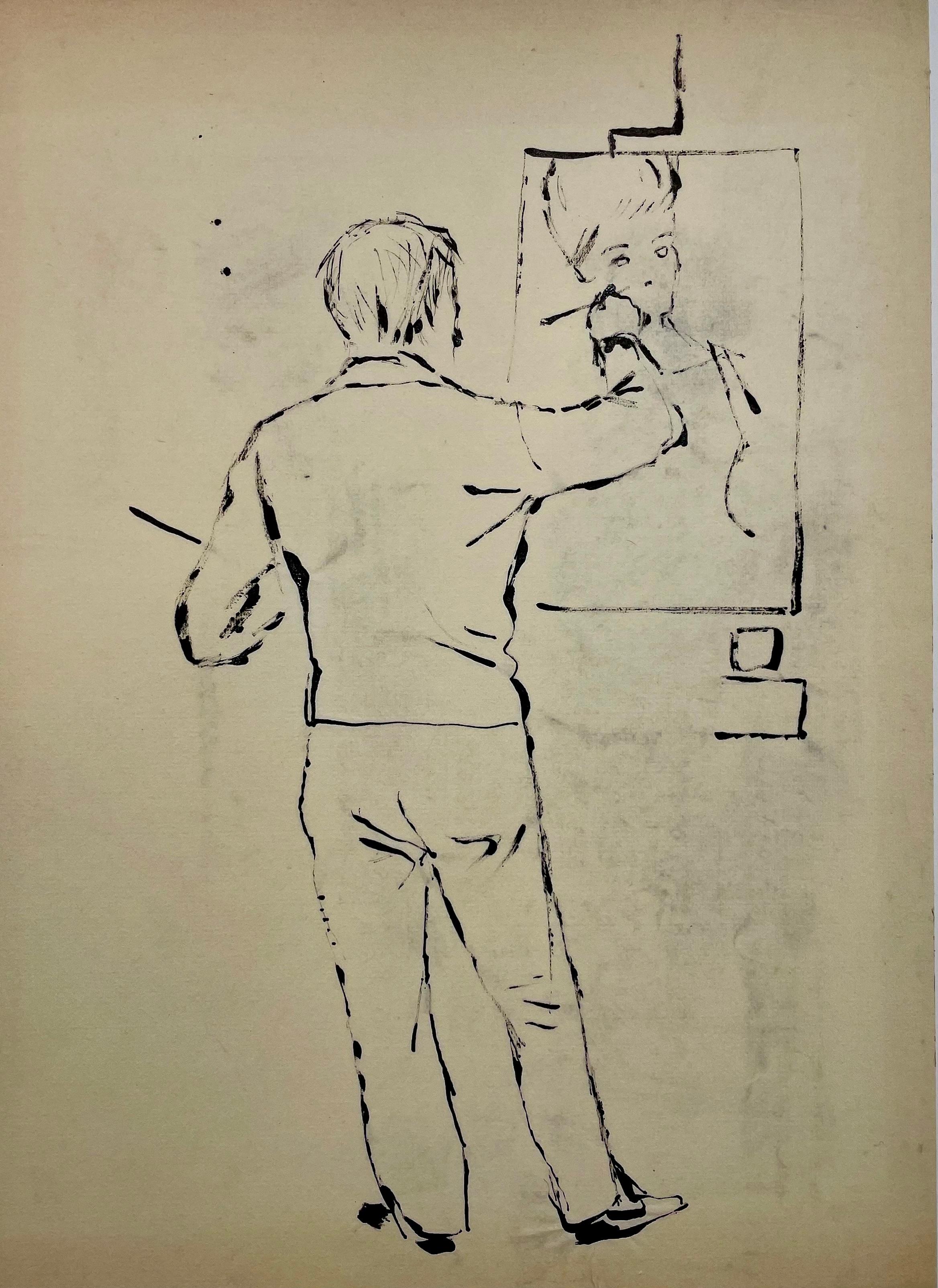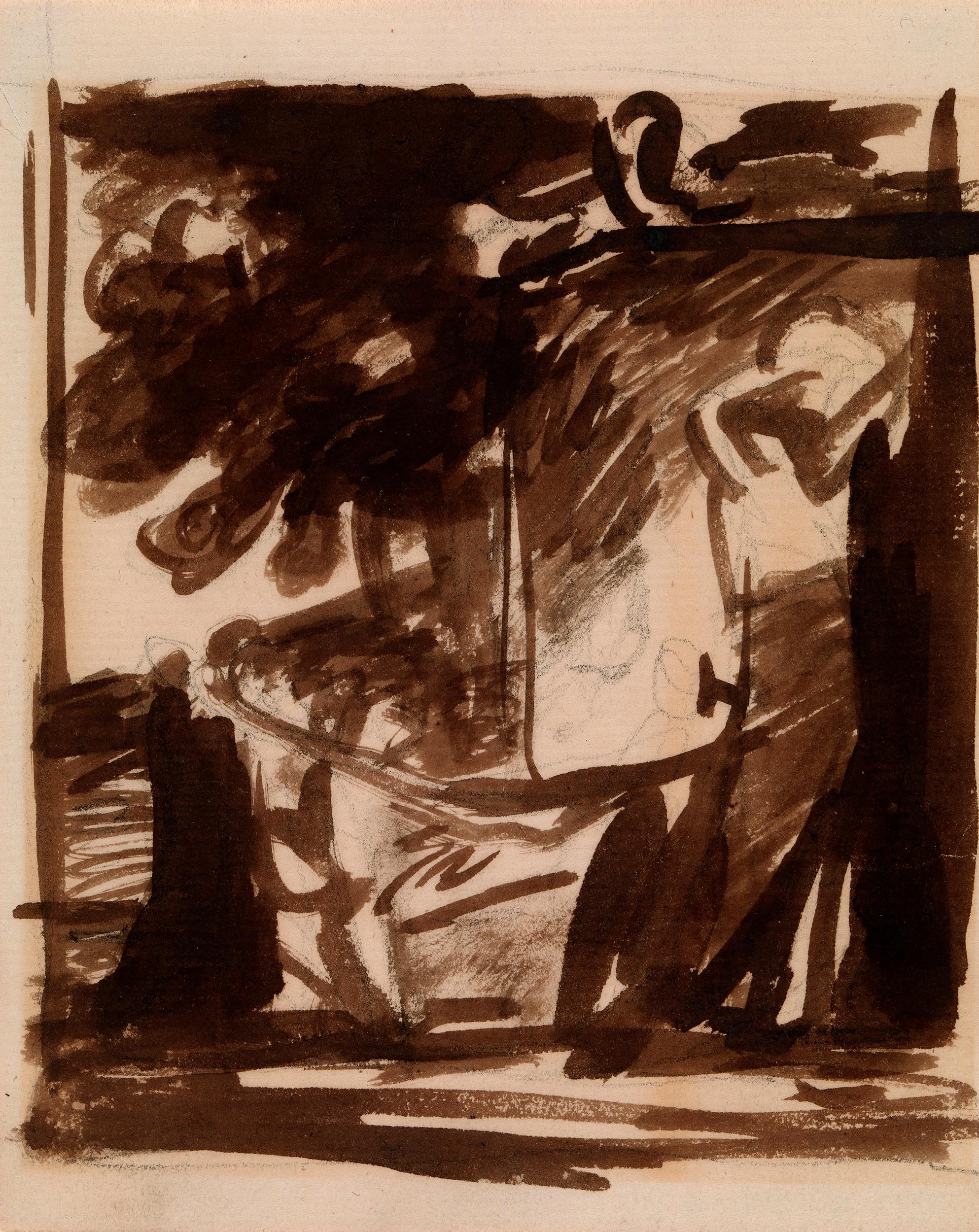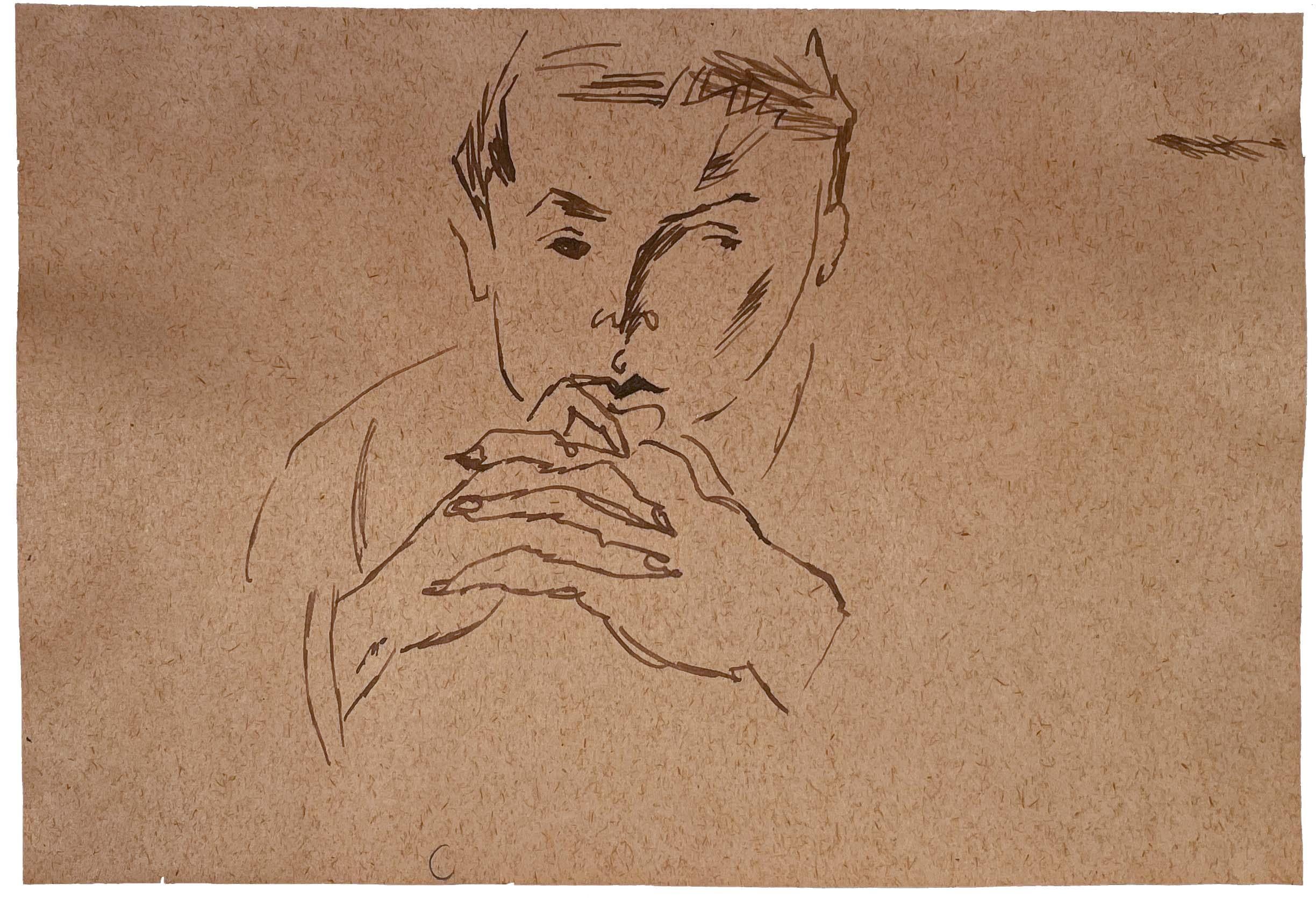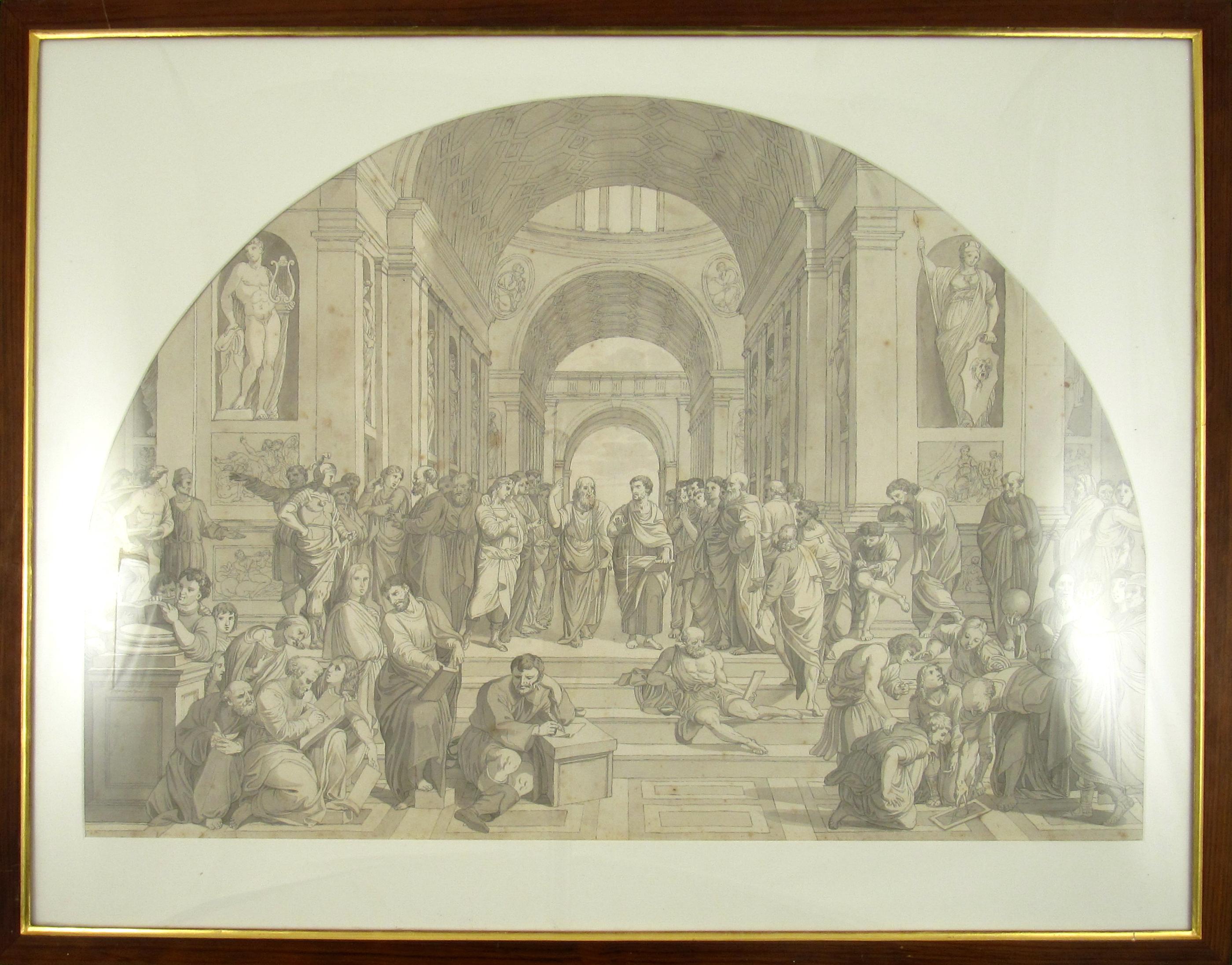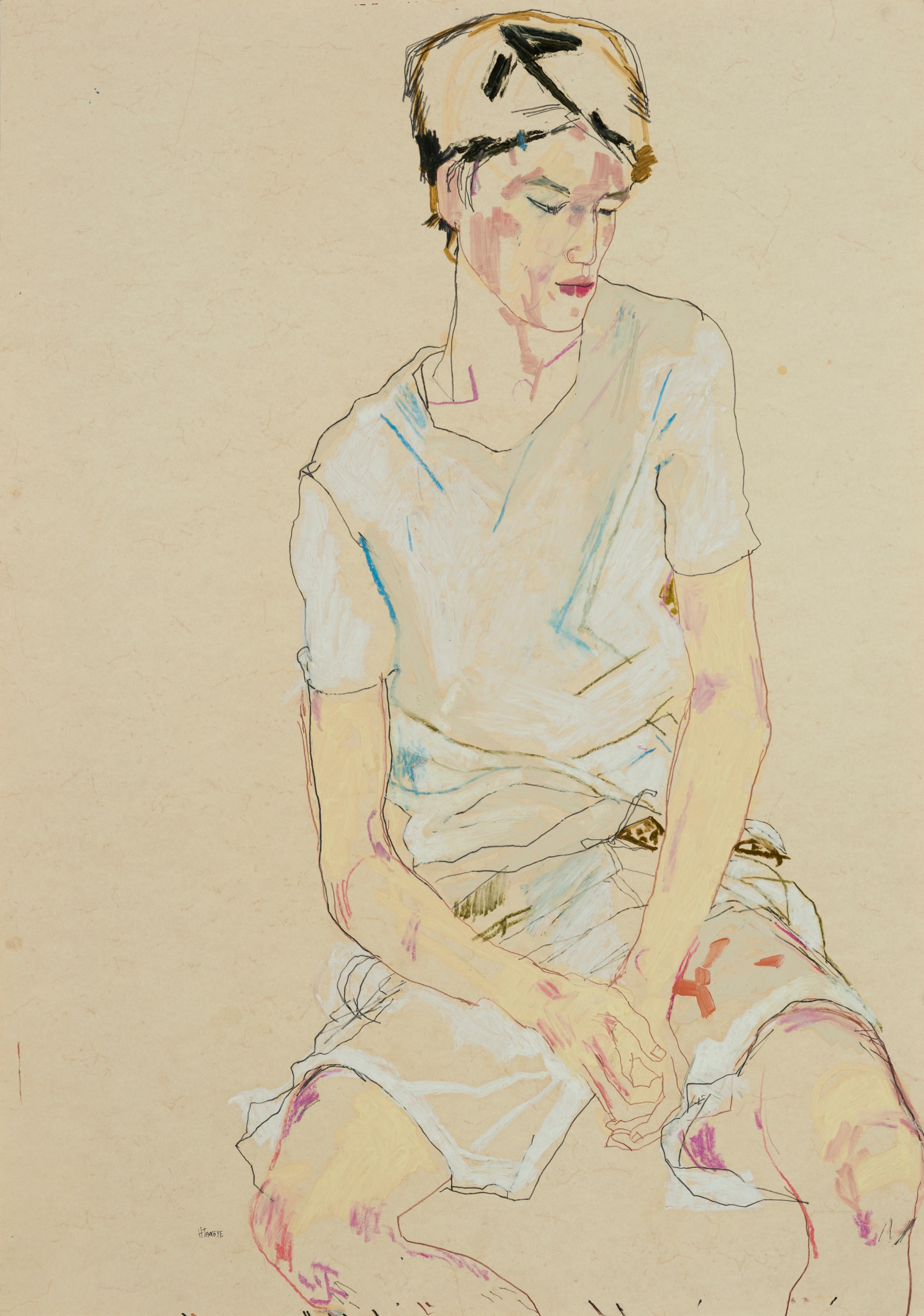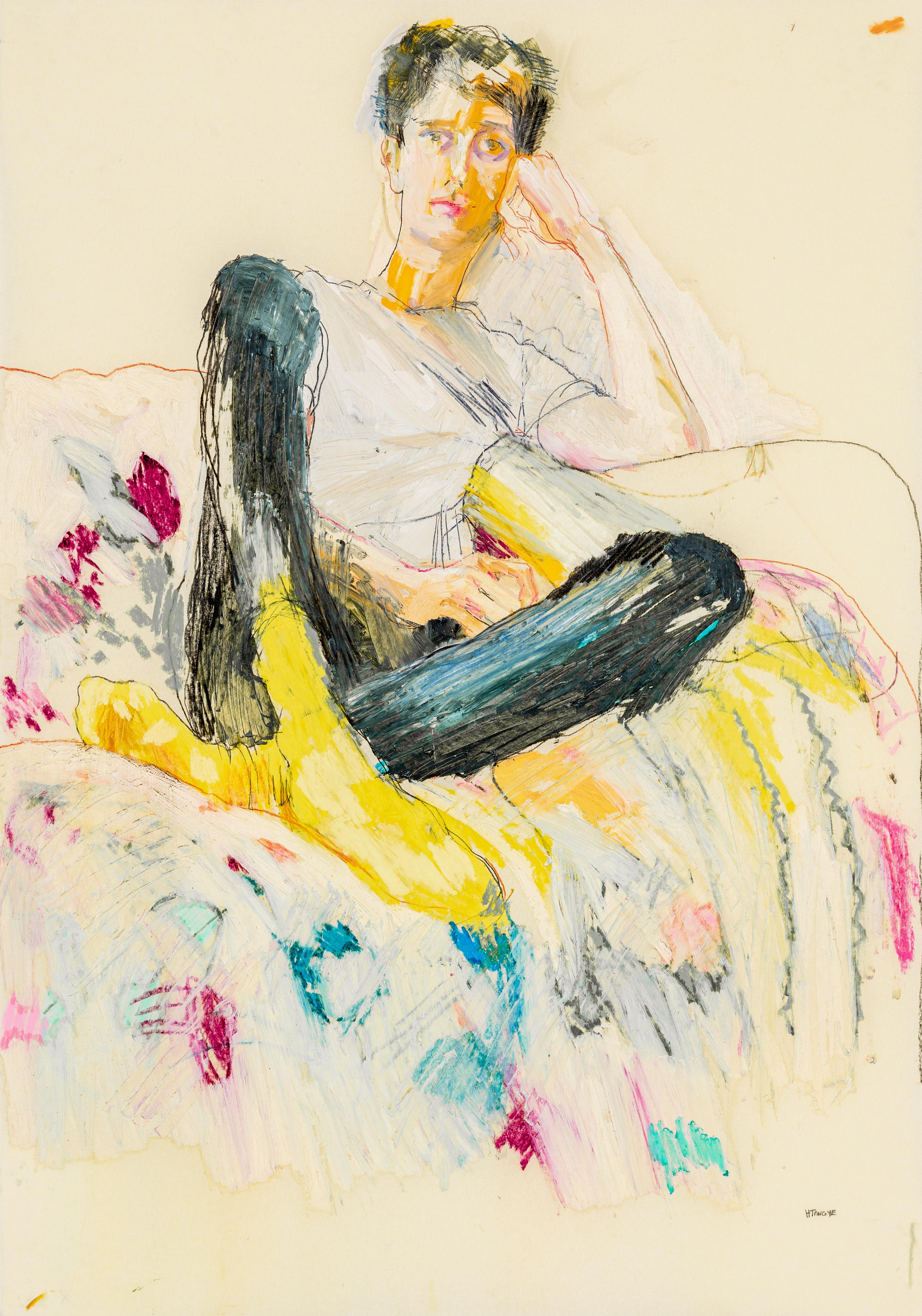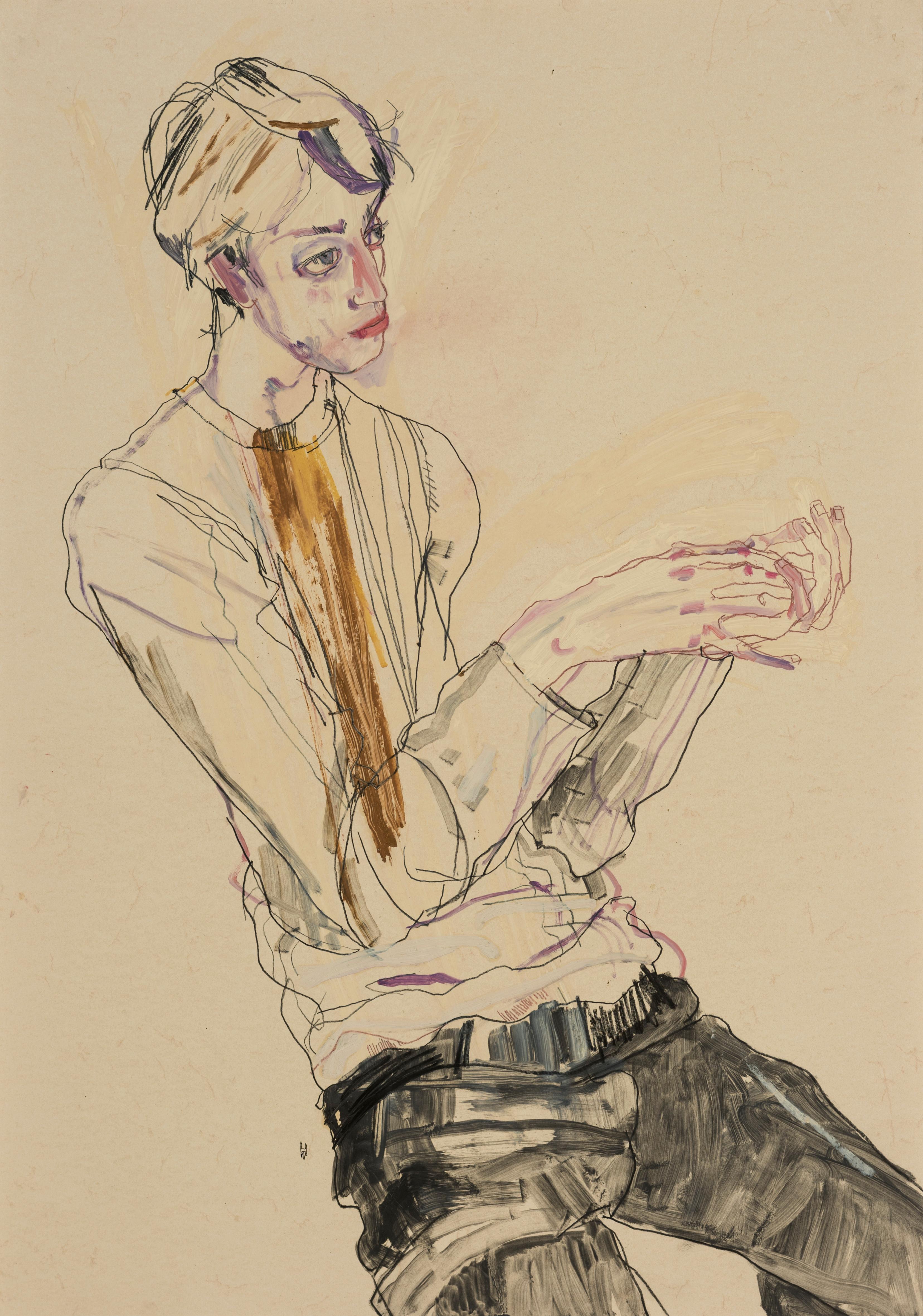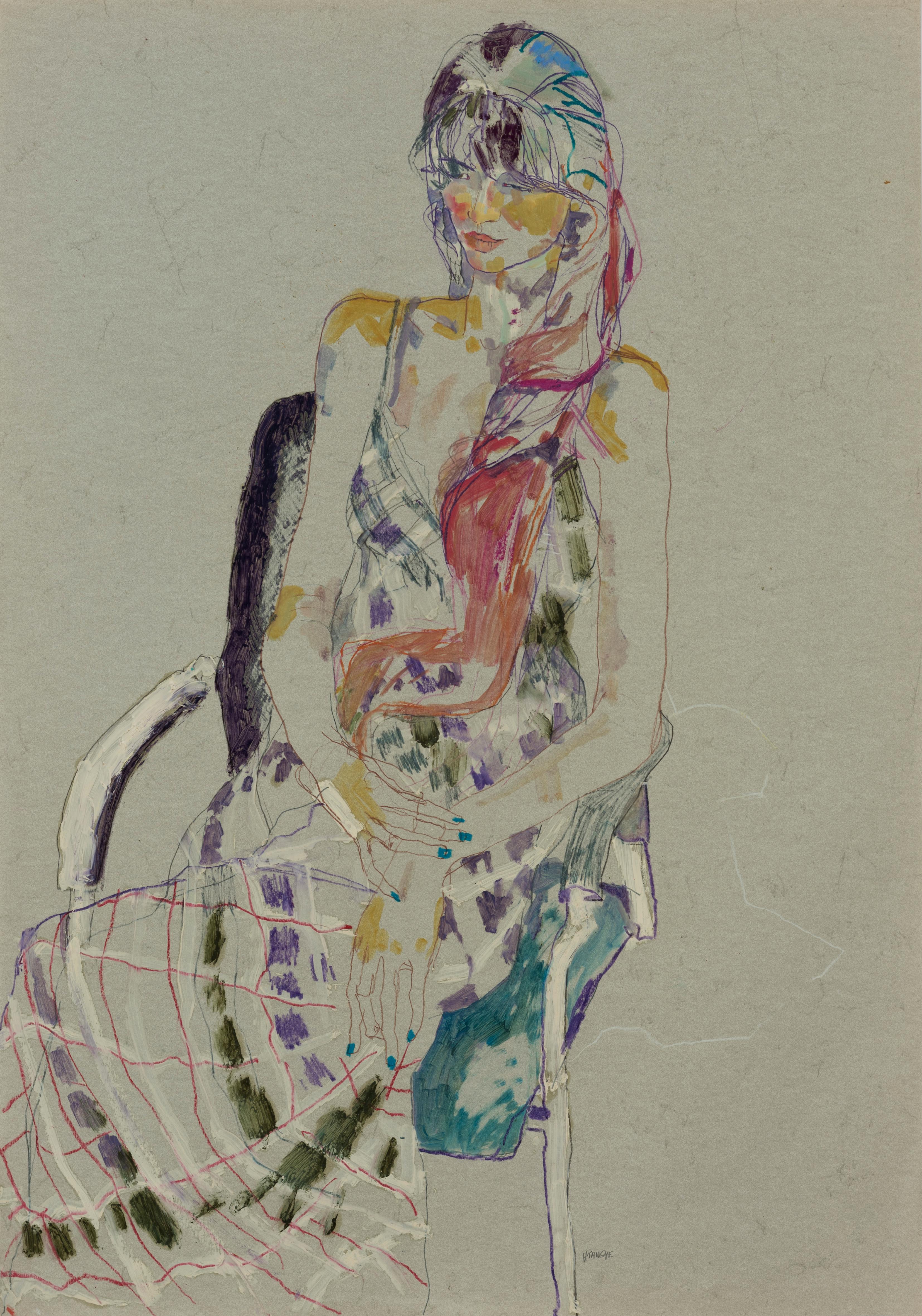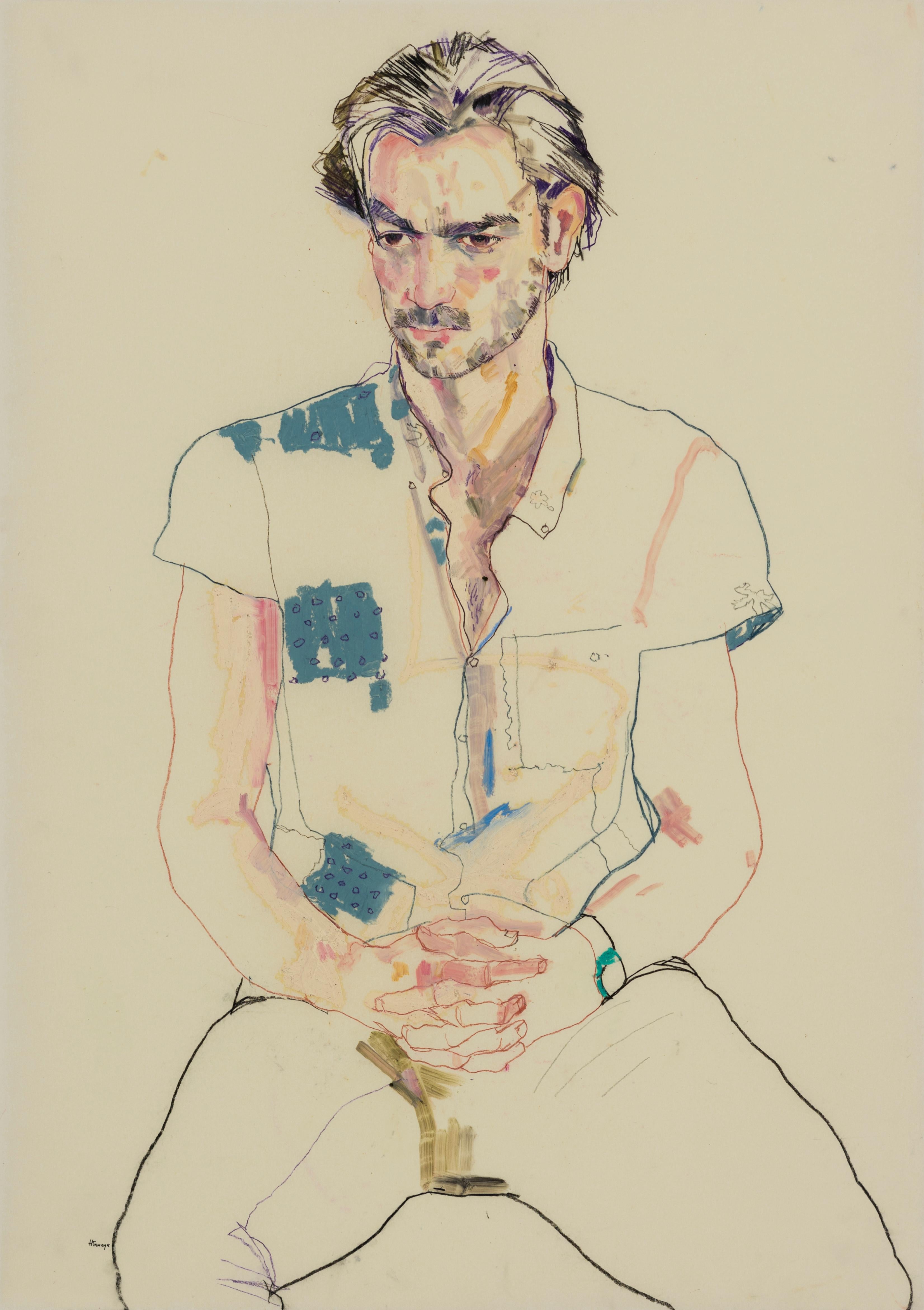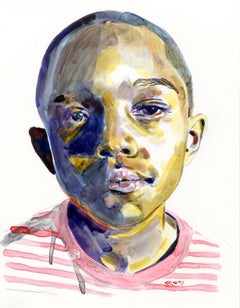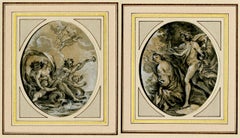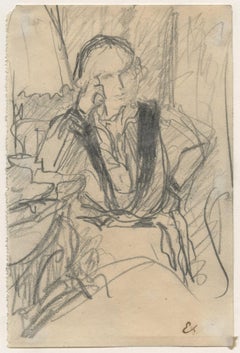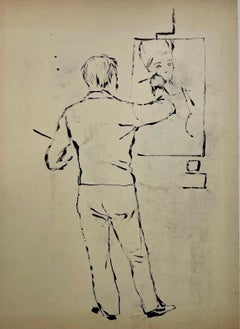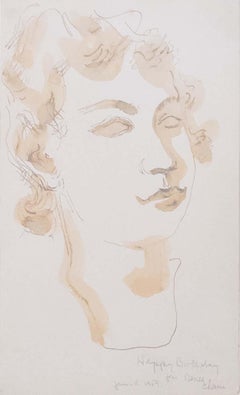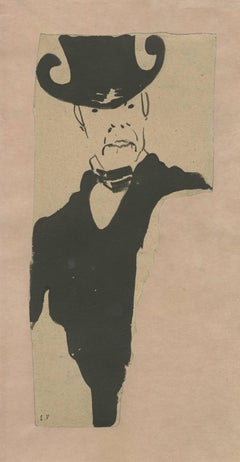
Coquelin Cadet in the role of Leridon
View Similar Items
Want more images or videos?
Request additional images or videos from the seller
1 of 5
Edouard VuillardCoquelin Cadet in the role of Leridonc. 1890
c. 1890
About the Item
- Creator:Edouard Vuillard (1868-1940, French)
- Creation Year:c. 1890
- Dimensions:Height: 19.38 in (49.23 cm)Width: 13.5 in (34.29 cm)
- Medium:
- Period:
- Condition:The irregular format image is cut from a larger sheet of studies and tipped English mount to rose colored support sheet.
- Gallery Location:Fairlawn, OH
- Reference Number:Seller: FA104881stDibs: LU1402044253
About the Seller
5.0
Recognized Seller
These prestigious sellers are industry leaders and represent the highest echelon for item quality and design.
Platinum Seller
These expertly vetted sellers are 1stDibs' most experienced sellers and are rated highest by our customers.
Established in 1978
1stDibs seller since 2013
711 sales on 1stDibs
Typical response time: 1 hour
Associations
International Fine Print Dealers Association
More From This SellerView All
- DRS2 at 7By Darius StewardLocated in Fairlawn, OHSigned with the artist's initials lower right Color ink on Yupo paper Framed in a white shadowbox presentation. Image: 12 x 8 7/8"Category
2010s Contemporary Portrait Drawings and Watercolors
MaterialsInk
- A pair of oval drawings for Ovid, MetamophosesBy Charles Joseph NatoireLocated in Fairlawn, OHA pair of oval drawings for Ovid, Metamophoses Left: The Triumph of Amphitrite (Book I) Right: Diana and Actaeon (Book III) From: Ovid, Metamophoses These mythological studies are a...Category
1760s Baroque Portrait Drawings and Watercolors
MaterialsInk, Pen
- Study of Lucie (Ralph) Belin seated in an interiorBy Edouard VuillardLocated in Fairlawn, OHStudy of Lucie (Ralph) Belin seated in an interior Graphite on paper, 1915 Signed with the estate stamp, Lugt 909b, the stamp faded from blue to brown (see photo) Provenance: Neffe-D...Category
1910s Impressionist Portrait Drawings and Watercolors
MaterialsGraphite
- Modele au Chapeau or Child with a Large HatLocated in Fairlawn, OHSigned with the estate stamp initials lower right, Lugt 388a (see photo) Provenance: Richard Norton Gallery, Chicago (label verso) Fairweather-Hardin Gallery, Chicago (label verso) ...Category
1880s Impressionist Portrait Drawings and Watercolors
MaterialsGraphite
- Study for "The Jade Necklace"By Joseph StellaLocated in Fairlawn, OHStudy for the painting "The Jade Necklace" Silver point drawing on prepared paper, n.d. Stamp lower right: "J Stella/JML Coll" (see photo) The painting of the...Category
20th Century American Modern Portrait Drawings and Watercolors
MaterialsPencil
- Young Lady in ProfileBy Harrison M. FisherLocated in Fairlawn, OHYoung Lady in Profile (Dorothy Gibson) Graphite on paper, c. 1915 Signed lower right (see photo). The sitter for this drawing, along with a huge number of Harrison Fisher’s works, is the model, turned actress, Miss Dorothy Winifred Gibson (1889-1946). She was one of the lucky ones who survived the sinking of the Titanic in 1912. There is an in depth biographical sketch available on Wiki. "Dorothy Winifred Gibson (1889-1946) is arguably one of the most fascinating women of the twentieth century. Her story is more than deserving of its own film or TV show and yet, if it was to ever appear on the screen, it would be in serious danger of being criticised as ‘too unbelievable’ or ‘farfetched’. But believe me, readers, everything I am about to tell you about Dorothy Gibson is true... Early Life Dorothy Winifred Gibson (originally Dorothy Winifred Brown, before her father died when she was three years old and her mother remarried), was born in New Jersey on 17 May 1889. Between 1906 and 1911 (aged 17-22), she appeared on stage as a singer and dancer in a number of theatre and vaudeville productions, and in 1909 she began modelling for Harrison Fisher, a famous commercial artist. Dorothy soon became Fisher’s favourite muse, and her image was seen regularly on postcards, merchandising products and even on the covers of magazines like Cosmopolitan. During this time, Dorothy met and married a pharmacist named George Henry Battier Jr, but the couple soon separated and were divorced by 1913. As early as 1911, Dorothy began appearing in movies, starting out as an extra but soon taking the leading roles in a series of films by Éclair Studios. Praised for her natural acting style and comedic flair, she was a huge hit – and arguably the first actress to be promoted as a star in her own right. Surviving the sinking of the RMS Titanic On 17 March 1912, after starring in a string of movies, Dorothy and her mother, Pauline, took a trip to Europe – but after a few weeks Dorothy was called back to America by the studio to start working on a new series of films. Dorothy and her mother were in Paris when they booked their tickets on the maiden voyage of the RMS Titanic, and boarded at Cherbourg on 10th April. On the night the ship sank, Dorothy had ‘spent a pleasant Sunday evening playing bridge with a couple of friendly New York bankers’ (her words, in an interview with the New York Dramatic Mirror). Despite the request of a steward for them to finish, they carried on with their game and it was not until about 11:40pm that Dorothy returned to the stateroom she shared with her mother. It was at that point that she felt ‘a long drawn, sickening crunch’ and, while not exactly alarmed, she decided nonetheless to investigate. Quickly noticing that the deck was ‘lopsided’, she rushed back to her room to fetch her mother, and the pair returned to the boat deck. Dorothy and her mother escaped from the ship on the first lifeboat launched (number 7), and given how quiet it was on the boat deck at the time, she asked her bridge partners to join them. However, events took a turn for the worst when a hole was found in the bottom of the lifeboat, causing icy cold water to rush in and almost flood the boat. Luckily, though, Dorothy explained, ‘this was remedied by volunteer contributions from the lingerie of the women and the garments of men.’ It is hard for us now to imagine the terrors of that night – and the emotional damage it caused to those who survived. After the event, Dorothy told the Moving Picture World, ‘I will never forget the terrible cry that rang out from people who were thrown into the sea and others who were afraid for their loved ones.’ Unbelievably, though, Dorothy was to re-enact the experience a mere five days after it happened, when she starred in the first film about the disaster. It was a silent movie, called Saved From The Titanic, and was actually hugely successful and the first of many hit films about the sinking. In the movie, Dorothy even wore the same clothes she had been wearing when the ship sank – a white silk dress underneath a cardigan and polo coat. Shortly after the release of Saved from the Titanic Dorothy gave up acting. An affair to remember...Category
1910s American Impressionist Drawings and Watercolor Paintings
MaterialsGraphite
You May Also Like
- “Guy au portrait de madame Descazeaux” / Guy (Bardone) in the portrait of MadameBy René GenisLocated in Berlin, MDRene Genis (French 1922-2004) “Guy au portrait de madame Descazeaux” / Guy (Bardone) in the portrait of Madame Descazeaux. Ink on paper laid down on matt board. Unsigned. Image siz...Category
Mid-20th Century French School Portrait Drawings and Watercolors
MaterialsIndia Ink
- 18th century ink study for the Leveson-Gower ChildrenBy George RomneyLocated in London, GBCollections: J. Goodfriend, USA. Brown wash and pencil on laid paper Framed dimensions: 13.25 x 11.75 inches This powerful drawing was made at the time that Romney was painting the famous group portrait of the Gower Children now in Abbot Hall Art Gallery, Kendal. Romney was a bold and incisive draughtsman who made numerous rich brown ink studies, principally for historical compositions; by contrast, comparatively few studies linked directly to his portraits survive. The existence of a group of studies for the Gower Children underscores its importance to Romney. The sitters were the five youngest of the eight children of Granville, 2nd Earl Gower who, at the time the portrait was commissioned, was President of the Council in Lord North’s government and one of the best-connected and most influential people in England. The present drawing which is a large scale treatment of the composition in its final form perfectly distils Romney’s conceit: the younger children dancing whilst their elder sister, in the guise of a Bacchante plays the tambourine. The bold and dramatic study underlines both the artistic confidence and classical grandeur Romney gained during his trip to Italy between 1773 and 1775. The commission from Granville, 2nd Earl Gower to paint five of his children came shortly after Romney’s Continental tour. The initial idea, as represented by the present drawing, seems to have been to paint Lady Anne, the figure on the right of the composition playing the tambourine, who was the youngest of Gower’s first four children by his second wife Lady Louisa Egerton and who married the Rev. Edward Vernon Harcourt, later Archbishop of York, with three of her younger half-siblings by Gower’s third wife, Lady Susanna Stewart: at the left Lady Georgina, who became Countess of St Germans following her marriage to the Hon. William Eliot; at the right Lady Charlotte Sophia, later Duchess of Beaufort and in the centre Lady Susanna, later Countess of Harrowby. Romney added a fifth child to the finished portrait, Gower’s son: Lord Granville, later created Viscount Granville and Earl Granville. In Italy Romney had produced a large number of studies of classical antiquities and old master paintings. The commission from Gower offered Romney the opportunity to explore a complex multi-figural group, putting into practice the kind of ambitious classical quotations that Reynolds was currently exploiting. In 1773 Reynolds had completed the remarkable group portrait of the Montgomery Sisters, now in the Tate Gallery, London, which showed them adorning a herm of the Roman god Hymen; the composition used a garland to link the three figures who were shown in classical costume dancing at the foot of a Roman sculpture. Scholars have long pointed to a similar sources for the two compositions: the works of Nicolas Poussin. Whilst the Montgomery Sisters is based, in part, on a Bacchanal now in the Musée des Beaux-Arts, the Gower Children has always been associated with Poussin’s Dance to the Music of Time, now in the Wallace Collection, London. It seems more likely that Romney was looking to an antique source in the form of the Borghese Dancers, a Roman relief, then in Palazzo Borghese in Rome. Romney would have seen the relief of interlocking, dancing maidens and would also have known Guido Reni’s Aurora...Category
18th Century Old Masters Portrait Drawings and Watercolors
MaterialsInk, Pencil
- Portrait or Study for a BustBy Chaim GrossLocated in New York, NYPortrait or Study for a Bust, 1959 by Chaim Gross (1902-1991) Ink wash and pencil on paper 8 x 5 inches unframed (20.32 x 12.7 cm) 14 ⅛ x 11 inches framed (35.8775 x 27.94 cm) Signed...Category
Mid-20th Century Modern Portrait Drawings and Watercolors
MaterialsInk, Pencil
- Contemplative ManBy Jules PascinLocated in New York, NYContemplative Man by Jules Pascin (1885-1930) Ink on paper 6 ¾ x 4 ⅝ inches unframed (17.145 x 11.7602 cm) 11 x 14 inches framed (27.94 x 35.56 cm) Signed on top right Description:...Category
20th Century Portrait Drawings and Watercolors
MaterialsInk
- School of Athens after Raphael Vatican 18th Century Pen Ink Wash Drawing c. 1780By (after) Raphael (Raffaello Sanzio da Urbino)Located in Meinisberg, CHThe School of Athens after Raphael • 18th century Pen and Ink Wash Drawing • Later glazed wood frame, ca. 62 x 78.5 cm • Mounted behind a modern arch...Category
Late 18th Century Naturalistic Figurative Drawings and Watercolors
MaterialsInk, Handmade Paper
- The Parnassus after Raphael Vatican 18th Century Pen Ink Wash Drawing c. 1780By (after) Raphael (Raffaello Sanzio da Urbino)Located in Meinisberg, CHThe Parnassus after Raphael • 18th century Pen and Ink Wash Drawing • Later glazed wood frame, ca. 62 x 78.5 cm • Mounted behind a modern arched matt...Category
Late 18th Century Italian School Figurative Drawings and Watercolors
MaterialsHandmade Paper, Ink
